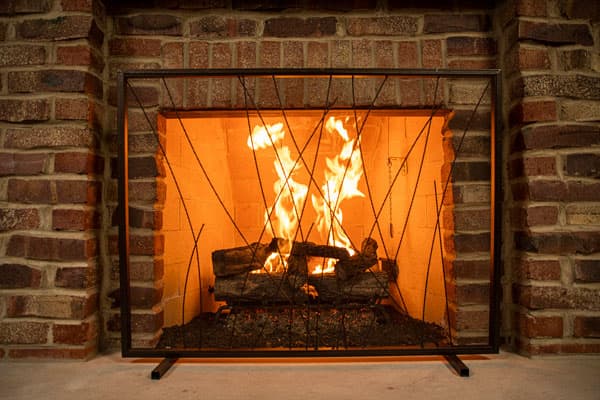
Gas Logs vs Wood Burning; Who Wins?
In the numerous wars of “which home feature is better?”, there’s one that’s waged more fiercely than all the rest. It’s the battle between gas logs and wood-burning fireplaces. Homeowners on both sides of the fireplace argue points of energy efficiency, odor emittance, overall costs, maintenance, styles, and aesthetics. So, which is better? A gas fireplace or a fireplace that burns wood?
How Gas and Wood Fireplaces Operate
To get a better grasp of the gas versus wood-burning fireplace debate, you’ll need to know how exactly each style operates. As their names imply, the way that both of these fireplaces heat your home is either by natural gas or by traditional wood burning. A wood-burning fireplace does just that—burns the wood as its fuel source to heat your home. These fireplaces, when cared for and intact, are decent heaters, especially when surrounded by traditional masonry and brick that insulates the heat for your living area. However, wood-burning fireplaces aren’t consistent heaters because the wood requires stoking and tending to. Wood-burning fireplaces expel their toxic fumes via a masonry chimney. Gas fireplaces utilize natural gas that’s piped into your fireplace to fuel your fire. These fireplaces have fake logs to give the effect of a real wood-burning fireplace, only without the mess. Gas fireplaces can essentially be switched on and off and are available in a fireplace insert version. Inserts make these fireplaces even more efficient and the vent by means of an exhaust pipe, with the combustion byproduct fumes being expelled via a stainless steel flue liner to the outside.Energy Efficiency
The big argument surrounding gas fireplaces and wood-burning ones is energy efficiency. Energy efficiency means effectively heating your home while not spending a fortune on energy costs. Although wood-burning fireplaces are traditional, they’re not energy efficient—not like their gas counterparts, at least. An open-masonry fireplace is considered inefficient in heating a living space. According to Cal/EPA Air Resources Board, a masonry fireplace has a heating efficiency of 10%. In some cases, like in a poorly insulated space, a masonry fireplace can actually have a negative heating efficiency. Alternatively, a fireplace insert or a gas heater has a much more favorable heating efficiency. A fireplace insert has a heating efficiency of 35% - 50% and a gas heater has an even higher efficiency rating at 60% - 90%. While efficiency certainly is important in terms of energy costs and keeping warm during the winter, it’s not the only aspect to consider for your fireplace style.Installation
If you’re considering switching or building a new fireplace and are deciding between a gas or wood-burning fireplace, then weigh the ease and cost of installation of both styles. Installing or switching fireplaces can be a major pain or could cost a fortune. It’s obvious that constructing a masonry fireplace is a much bigger headache than a gas fireplace or a fireplace insert. Not to mention it’ll cost a lot more because you’ll need the specialized skills of a stone mason to do the job. A traditional wood-burning fireplace isn’t a DIY project and you’ll need to seek out a trained professional. If a chimney and firebox aren’t in place, they’ll need to be constructed, which adds significantly to the overall costs. A gas fireplace doesn’t require nearly as much effort. Its installation just needs a small exhaust pip for venting, and possibly the new addition of a flue liner. New flue liners are available in stainless steel tubes that can be installed from the top of the chimney, but you’ll want to have a certified technician regardless. You can also ask your fireplace professional to install a gas fireplace blower, which helps heat your home more efficiently and effectively. A new gas line may need to be installed if one isn’t already in place.
